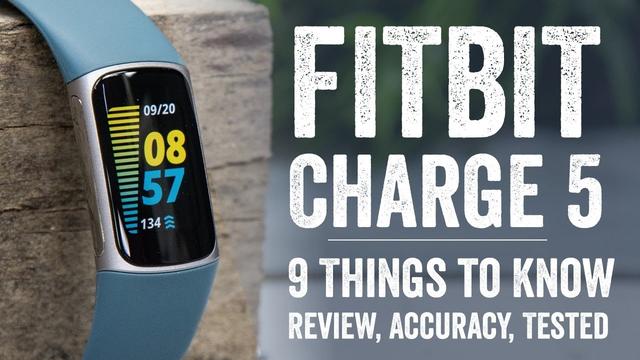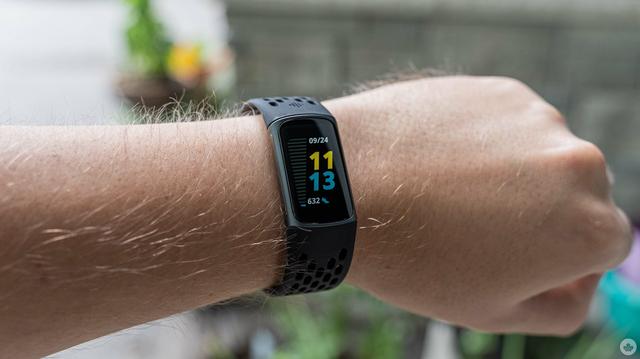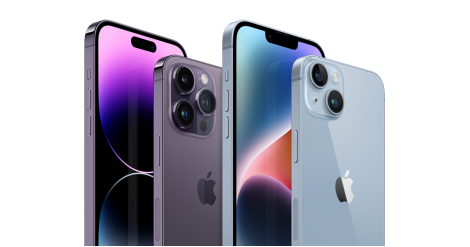Fitbit Charge 5 Review — A great first device or mighty upgrade
Unfortunately due to work/life factors and balance, many of us live sedentary lifestyles these days. We work in front of computers, relax in front of screens and even our social — when we can have one — lives are largely seated. This is where the fitness tracking revolution took another leap forward and thankfully, manufacturers like Fitbit kept up.
For years now, Fitbit has continued to build its device list as well as the user experience through the app. The Fitbit Charge 5 has recently been released which upgrades a number of features from last years Charge 4. Today we’ll take a look at whether the Charge 5 is a great stand-alone buy, upgrade from the Charge 4 or both.
The Charge 5 is Fitbit’s latest Bluetooth connected fitness tracking band, making it a physically small device — compared to the Sense or Versa — but highly functional. That physical size makes it very light as well, so it’s easy to wear all day, every day. Even compared to the previous device, the Charge 5 is a slim device which makes it unobtrusive during wear, minimising the chance of belting it around too much.
Like its predecessor, the Charge 5 can be submerged in water up to 50 meters and has the capability to track a huge number of activities including outdoor activities like Running and Bike rides to indoor options like treadmill runs and boxing.
Being a colour touchscreen you’ll have good controls over the device. Scrolling between screens, notifications and features is responsive. Compared to the Charge 4 however, the removal of the side function button can be troublesome if you’re fingers are wet from swimming or sweat, as the screen loses a lot of that responsiveness.
If you’ve owned a previous fitness tracker from Fitbit, this will sound like a very familiar story. The navigation through menus and features are consistent here to previous generations, although there are new features to explore.
Swiping down from the top of the screen brings into view quick access features to choose from such as:
Swiping left/right filters through features of the device from your main watch face, to notifications, exercise options, alarms, timers, EGA and finally ECG.
Finally, swiping up from the bottom of the screen opens up a wrap up of your day in stages. The day wrap up — first screen — is very useful as it shows your steps, distance, zone minus and energy burn which is all captured continuously through the day.
When it comes to activity tracking, Fitbit gets pretty much everything you’d want from an activity tracking band right. Carrying over the feature set from Charge 4 including blood oxygen level monitoring, heart rate monitor, sleep monitoring and using all of the metrics available a readiness score.
The Fitbit Charge 5 takes a bit of a step up from the Charge 4. This feels more like an aid to help you build towards and meet your fitness goals, whereas the 4 was more a movement tracker. This is evident in the significantly larger activity tracking options available:
During tracking, you’ve got instant access to a number of metrics that help you understand your work rate. This includes your heart rate zone (below zone, fat burn, cardio or peak) which is gauged by your age, calorie burn and zone minutes are specific to the activity. The time, date and activity run-time round out the display.
The amount of data captured during fitness activities by the Fitbit Charge 5 is very broad. It helps to understand not just your physical exertion through the activities, but also, coupled with other data captured: Tells you how ready you are to complete further activities known as “Daily Readiness”.

It’s a good guide but definitely not completely accurate – following multiple gym classes on a Thursday night and a huge day (over 16,000 steps) on Friday, my readiness score was pretty reasonable (76/100) on Saturday which really wasn’t how I was feeling.
The Fitbit Charge 5 is a lightweight, slim and relatively subtle device to wear. It presents you with as much, or little information as you want it to, and it’s easy to customise most of the features. You really only ever need to take it off to charge it, although I’d recommend if you know you’re having a quiet day then take a day off – because if you’re not used to it you can get some skin irritationin the early stages.
We’ve reviewed enough Fitbit devices to not need to cover the app in full. Suffice to say the app has continued to evolve over time with features, usability and presentation improving. While there isn’t a huge change in the app itself, there are new (including subscription) features.
We’ve already mentioned the readiness feature, but that’s not the only addition through the premium features. The health metrics are interesting to look at (Breathing rate, Heart Rate Variability, Skin temp, Sp02 and Resting Heart Rate are covered) however, I’m not sure — at AU$14.99 per month — I’d keep them were it not for the free trial with a new device.
What does make the Fitbit App particularly useful to everyone from first time users through to fitness fanatics is the dashboard customisation. This includes all of the data mentioned already (including cycle tracking for women) as well as food and fluid intake which are more useful than I originally expected with better tracking of food intake vs energy output and good hydration.
One of the things that has been a highlight of the Fitbit range of trackers for some time now is the simplicity of use. From the time you pair your Fitbit to your phone, it just works. The sleek design of the hardware makes it generally pretty comfortable to wear as a daily use item and the “swim-proof” rating means you can wear it in the shower, bath or pool.
The battery life is very good, even with multiple activity tracking sessions I consistently got 6 – 7 days of battery life out of the device. But it’s not just the battery life that works well, the magnetically located charger is the easiest I’ve used where you can easily ensure the charging pins are located correctly.
Perhaps the biggest surprise for me was the updated notification setup which allows you to take a granular setup to which notifications you want on your wearable. Previously there were only a few apps that you could receive notifications from, now you can choose what apps from your entire library. For messaging apps, you can then choose from simple canned responses, or simply clear the notifications.
I know it’s progress and that the device is touch screen but I miss the side button from the Charge 4. When you’ve been working out heavily or just been in a pool, the screen doesn’t respond as well as it would were you and the Charge 5 dry.
The other problem I found with the touch screen is that the screen can be accidentally triggered while working out, which, on more than one occasion has stopped the device from tracking my activities. By having a way to screen lock the device while working out — like the water lock option — this could be alleviated.
Finally, a general gripe about wearable devices is that charging needs to move in the same direction as phones: A universal charging type. Whether that’s wireless, or an agreed upon — USB-C would be good — connector, it needs to happen in the market in the near future.
Normally I’d hesitate at this, but I believe that the update from the Charge 4 to the Charge 5 this year not only warrants a yes for first time buyers but those looking to upgrade also. The Charge 5 hardware is sleek and unassuming while offering a huge amount of data capture and daily use functions like customisable notifications.
The feature set from a health tracking perspective really has gone to a new level though. This includes a wider range of activity tracking options, health metrics and even the aforementioned food and water intake.
It is worth mentioning the price tag is slightly higher at $269.00 compared to the previous year and probably verging on the price may be considering a price worthy of a watch. Despite this price, it’s a device that’s worth the investment if you’re looking to get on top of your health in 2022.
Due to hygiene reasons in COVID times, the device has not been requested for return.



